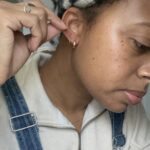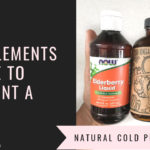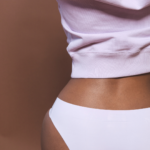
Probiotics, Prebotics, Gut Health, Microbiomes…oh, my!
Switch on the TV during the daytime while any number of varied aged women are giving their opinion on the hottest topics of the day and you are bound to come across a commercial or three trying to sell you a product that will “magically” make you more regular and improve your gut health in a short number or weeks.
Now, don’t get me wrong, I’ve taken my fair share of probiotics and learned A LOT about which might be worth it and which are definitely not. But, after years of trial and error, I decided to dig deeper and get to the guts of the matter on the science of our micro biome and why we should really be paying more attention to caring for it on a regular basis.
Lucky for us, the American Museum of Natural History did a lot of the work and organized it in an easy to understand visually appealing exhibit called “Inside You”. The exhibit runs until June 16th, 2019. This exhibit explains the difference and delicate balance of the good and bad bacteria within our bodies.
Located right behind one of the most memorable halls where the small herd of elephants call home, you are greeted by a large smiling drawing of a human with enlarged gut bacteria waiting for you to come and check out their origins and function. The exhibit spans the length of a large hall and could be missed by a hurried visitor, so be sure to slow down a bit when you see lots of the signature green and blue that carries through the entire area.
Here are 3 Quick Things I Learned About My Gut Health from the “Inside You” Exhibit
1. We get our microbes from our momma…well, most of us.
When we are still in utero, we are safe and protected in a very sterile environment. However, when we are born, we are first introduced to the bacteria we need to help shape our immune system. If you were born via the birth canal, you were more than likely completely covered with these bacteria…along with a lot of other things we won’t get into in this post.
BUT, kids that are born via cesarean do not have the opportunity to be bathed in as many of these microbes as the birth canal kids. Don’t feel bad, I was born via C-section as well.
There are many studies and practices being developed now to get more of these microbes into c-section born newborns which will be quite interesting to see what results incur.
In the meantime, this is surely something to think about for moms-to-be. Research and good health overall is definitely on the side of a traditional birth as opposed to a cesarean.
2. Prebiotics have always been “A Thing”
No, that’s not a typo. Prebiotics are the kind of the other side of the probiotics gut health coin that we don’t really speak about enough…but really should.
Prebiotics are insoluble fibers that you can eat to help the good bacteria in your gut grow on their own. Up until recently, we were only shown the benefits of probiotics and their ability to replace the good bacteria that may have been lost through a variety of ways.
BUT, how about we PREVENT a problem BEFORE it’s even a problem, right?
This is the beauty of Prebiotics.
Simply put, by eating certain types of foods, we can actually help our own bacteria grow by just eating certain foods.
And at no additional cost to you if you are already eating these foods.
What are these foods? These foods include jerusalem artichokes aka sunchokes and dandelion greens, asparagus, and potato skins. All of these foods are packed with fiber and allow the good bacteria to get going.
3. Depression might be cured in the gut
While checking out the exhibit, I was shocked and amazed to find out that gut disorders are often associated with depression. Apparently, some bacteria release chemicals that can disrupt the nervous system.
It goes on to state that studies have been done where people who were depressed experienced improvement in their state by simply receiving probiotics.
As mentioned above, probiotics help to repair the missing good bacteria that should be in one’s gut, but in theory, increasing the consumption of prebiotic foods should also help.
As you can see, I learned quite a bit at the Inside You exhibit. My son also found the space easy to navigate and understand. I would definitely recommend families and even individuals check out the exhibit while it is still open.
FTC DISCLOSURE: The tickets to the American Museum of Natural History were furnished by the Museum. All opinions are my own.
PIN IT

CLICK BELOW TO CHECK OUT MY POST ON HELPING KIDS EAT HEALTHIER














